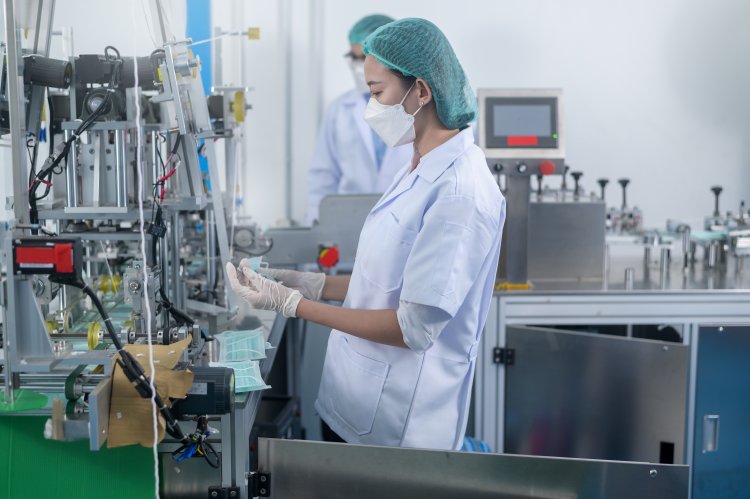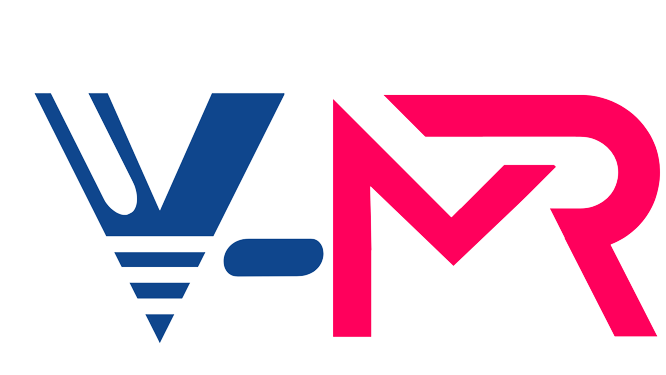Global Healthcare Additive Manufacturing Market Size to Reach $29.5 Billion at a CAGR of 17.2% by 2030
Vantage Market Research expects the Healthcare Additive Manufacturing Market to reach USD 29.5 Billion by 2030, exhibiting a growth rate (CAGR) of 17.2% during 2023-2030.

The Global Healthcare Additive Manufacturing Market size reached USD 7.6 Billion in 2022. Vantage Market Research expects the market to reach USD 29.5 Billion by 2030, exhibiting a growth rate (CAGR) of 17.2% during 2023-2030.
Table of Content [TOC]
|
Introduction |
|
|
|
|
Applications of Additive Manufacturing in Healthcare |
|
|
|
|
How Additive Manufacturing is Transforming Patient Care |
|
|
|
|
The Future of Additive Manufacturing in Healthcare |
|
|
|
Conclusion |
|
|
Revolutionizing Healthcare: Exploring the Potential of Additive Manufacturing
Additive manufacturing has recently become a game-changer in healthcare. It is revolutionizing patient care, enhancing treatment outcomes, and spurring innovation thanks to its capacity to produce complex, specialized medical solutions.
Given several significant factors, the market for Healthcare Additive Manufacturing is expanding rapidly. One of the main drives is the need for personalized medical solutions, as additive manufacturing makes it possible to produce implants, prosthetics, and medical devices unique to each patient. This personalization promotes the effectiveness of the therapy, raises patient happiness, and lowers the possibility of problems. Technological, material, and regulatory framework developments enable market expansion and guarantee compliance, quality, and safety. This blog will delve into Healthcare Additive Manufacturing, examining its uses and radical influence on the healthcare industry.
Request Sample Report of Healthcare Additive Manufacturing Market @ https://www.vantagemarketresearch.com/healthcare-additive-manufacturing-market-2225/request-sample
Top Companies in Global Healthcare Additive Manufacturing Market
- GE Additive (Sweden)
- 3D Systems Inc. (U.S.)
- EnvisionTEC (Germany)
- RegenHU (Switzerland)
- Allevi Inc. (U.S.)
- EOS GmbH (Germany)
- Materialise N.V. (Belgium)
- Stratasys Ltd. (Israel)
- Nanoscribe GmbH (Germany)
- GPI Prototype and Manufacturing Services LLC (U.S.)
Applications and Advancements of Healthcare Additive Manufacturing Market
Healthcare Additive Manufacturing has made significant progress and has a wide range of uses that are revolutionizing the sector. Making medical implants is one of many applications. With the help of additive manufacturing, custom implants can be made for each patient that matches their anatomy, improving functionality, speeding up recuperation, and improving patient comfort. Customized implants are rapidly being used in orthopedic, dental, and craniomaxillofacial applications, revolutionizing implantology and improving patient results.
Another significant application is in the development of custom orthotics and prostheses. With additive manufacturing, personalized prosthetic limbs, orthotic devices, and braces can be made to fit a person's precise requirements. In addition to improving the devices' fit and comfort, personalization raises the standard of living for those who have lost limbs or musculoskeletal disorders. Additionally, lightweight and tough prosthetics may now be produced thanks to additive manufacturing, improving both their usability and appearance.
Additionally, improvements in the field of bioprinting have been made possible by advances in Healthcare Additive Manufacturing. To create functional tissues and organs, bioprinting involves precisely depositing living cells, biomaterials, and growth factors. Since it enables the production of patient-specific tissues and organs that can be utilized for transplantation and medication testing, this technology has enormous potential for regenerative medicine. Although it is still in its infancy, bioprinting has the potential to completely transform patient care by addressing the organ scarcity crisis and offering individualized treatments for complex medical illnesses.
Transforming Patient Care
The ability to produce individualized medical solutions due to the industry for Healthcare Additive Manufacturing is revolutionizing patient care. Healthcare professionals can use additive printing to make custom implants, prostheses, and medical gadgets that correctly match the distinct anatomical requirements of specific patients. The fit, comfort, and functioning of the medical solutions are improved by personalization, which enhances patient results and satisfaction.
Additionally, due to the rapid production of medical devices made feasible by additive manufacturing, patients waiting for life-saving medical treatments experience shorter wait periods. Producing specialized medical devices requires long lead times when using traditional manufacturing techniques. However, additive manufacturing makes on-demand production possible, which reduces the need for large amounts of inventory and streamlines the supply chain. This not only makes medical treatments more accessible but also makes it possible for healthcare professionals to react swiftly to new patient needs, such as in the event of an emergency or unforeseen surgical needs. The ability to offer prompt and specialized medical solutions raises the standard of patient care overall.
Buy Now Our Healthcare Additive Manufacturing Industry Report @ https://www.vantagemarketresearch.com/buy-now/healthcare-additive-manufacturing-market-2225/0
Sources of Future Growth
The future of additive manufacturing in healthcare is bright, with continued partnerships and collaboration between business interests, healthcare providers, academic institutions, and regulatory agencies. These partnerships promote knowledge exchange, create best practices, and promote standardization, assuring the continuing development and acceptance of additive manufacturing in the healthcare industry. Applying sophisticated materials, machine learning, and artificial intelligence will increase the effectiveness and capacities of additive manufacturing in the healthcare industry as technology develops.
Conclusion
Healthcare Additive Manufacturing is revolutionizing how we provide patient care by delivering previously unheard-of levels of customization, accuracy, and innovation. The possibilities in healthcare are being pushed by additive manufacturing, which produces customized implants and tissues. To realize the full potential of Healthcare Additive Manufacturing, stakeholders must work together, invest in research and development, and manage regulatory frameworks. With patient-centered care and cutting-edge medical solutions coming together in the future, millions of people's lives could be improved globally.
Frequently Asked Question (FAQ) – Frequently Asked Question (FAQ) – Healthcare Additive Manufacturing Market
- What is Healthcare Additive Manufacturing?
- Healthcare Additive Manufacturing, also known as 3D printing in healthcare, is a technology that uses computer-aided design (CAD) to create three-dimensional medical devices, prosthetics, implants, and anatomical models layer by layer.
- How is Additive Manufacturing used in Healthcare?
- Additive Manufacturing is used in healthcare to create custom implants, prosthetics, orthopedic devices, dental products, and patient-specific anatomical models. It offers precision, customization, and rapid prototyping.
- What are the Advantages of Additive Manufacturing in Healthcare?
- Additive Manufacturing in healthcare offers benefits such as patient-specific designs, reduced lead times, cost-effective production, improved functionality, and the ability to create complex structures.
- What are the Key Applications of Additive Manufacturing in the Healthcare Industry?
- Additive Manufacturing is used for applications like creating patient-specific implants, surgical guides, hearing aids, dental prosthetics, and even drug delivery devices.
- Is Additive Manufacturing Safe for Medical Devices?
- Yes, Additive Manufacturing is safe for medical devices. However, it must comply with strict regulatory standards and quality control measures to ensure patient safety.
- How is Additive Manufacturing Impacting the Healthcare Supply Chain?
- Additive Manufacturing reduces supply chain complexities by enabling on-demand production, reducing inventory costs, and offering decentralized manufacturing solutions.
- Are there Any Challenges in Implementing Additive Manufacturing in Healthcare?
- Challenges include regulatory compliance, material selection, quality control, and the need for skilled professionals to operate the technology.
- What is the Growth Potential of the Healthcare Additive Manufacturing Market?
- The healthcare additive manufacturing market is expected to experience significant growth due to increasing demand for patient-specific solutions, technological advancements, and growing adoption in healthcare institutions.
Read Our Latest Press Release: Generic Sterile Injectable Ecosystem Market - In-depth Analysis
Contact us
Eric Kunz
6218 Georgia Avenue NW Ste 1 - 564
Washington DC 20011-5125
United States Tel: +1 202 380 9727
Email: [email protected]
Website: Vantage Market Research


















